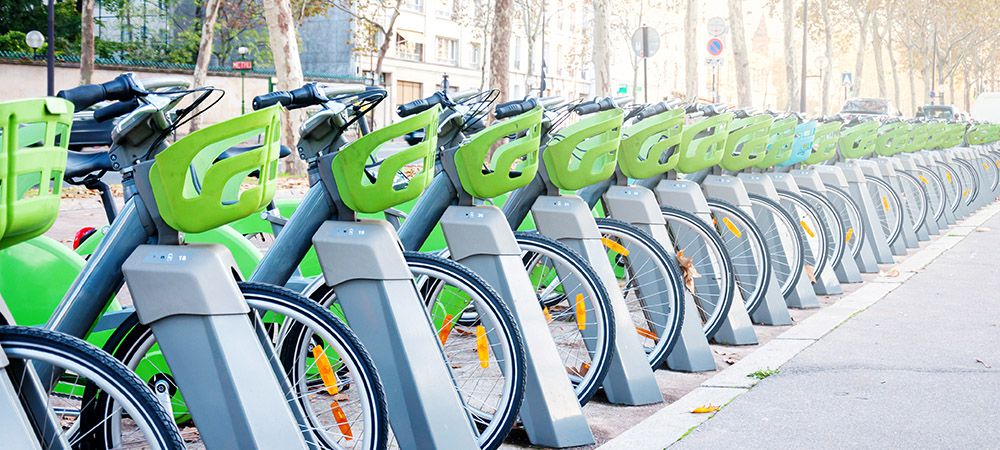An electric bike can provide a great transport solution for any environmentally-conscious consumer. However, as affordable these vehicles are to maintain, their shipping causes significant concern, even more so if imported overseas.
Imported products are subject to rigorous state regulations, taxes, and depending on their country of origin, there are other fees as well. Here is a guide on cross-border shipping for electric bikes in Canada and America.
Regulatory Bodies
In the US, the three main regulatory bodies supervising the cross-border shipping of electric bikes are the DOT (Department of Transportation), the EPA (Environmental Protection Agency), and CPSC (Consumer Product Safety Commission). The latter two agencies regulate entries for e-bikes with a gasoline engine and low-speed vehicles, respectively.
DOT requires e-bikes manufactured for on-road use to comply with Federal Motor Vehicle Safety Standards (FMVSS). These are not applicable for off-road vehicles.
To determine whether an electric bike is on-road, DOT looks at the following:
- Whether the bike is capable of a top speed above 20mph
- Whether it has an electric motor of over 750 watts
- Whether the bike is equipped with lights, mirrors, turn signals, and other equipment necessary for on-road use
After determining that the bike is suitable for on-road use, its manufacturer must comply with FMVSS and signal this with a label on the bike itself. They also need to submit their own information to the NHTSA, along with the VIN numbers for the bike. Whether the vehicle is for on-road use or not, its importer will still need to submit an HS-7 form, stating all the import and export details of the e-bike.
In Canada, the regulatory bodies responsible for controlling the import of electric bikes are the Canada Border Services Agency (CSBA) and Transport Canada.
Import Requirements
Before you import any vehicle into Canada, it must meet the requirements of Transport Canada and the Canada Border Services Agency (CSBA). Electric bikes manufactured in countries other than the United States and Canada do not comply with the requirements of Canada’s Motor Vehicle Safety Act. This means that you can only import e-bikes to Canada from the US. On the other hand, the United States doesn’t place such limitations on imported goods.
When it comes to the Canadian import requirement from the US, alongside the e-bike, you will need to present a Bill of Lading, a Commercial Invoice, applicable Import/Export Licenses, and a Canada Customs Invoice (CCI). The latter needs to contain the name, address, and phone number for both the shipper and the consignee.
In addition, a CCI must include the shipment date, the estimated value of the bike, and a detailed description of it. Regular importers may simplify this process by applying for a Non-Resident Importer number (NRI), which allows them to provide all the necessary data through a preset system.
To ship an electric bike into the US, you will need to prepare:
An Importer Number: This is either the importer`s Employer’s Identification Number (EIN) assigned by the IRS (for businesses) or social security number (for individuals). Applies for Formal Entries with a value larger than $2,500.
Commercial Invoice: This document contains a detailed description of the bike, including its estimated value.
Bill of Lading (BOL): Your carrier prepares this and shows it to the customs at the time of pick-up.
An Electronic Export Information (EEI) form: For bikes with a value that exceeds $2,500, the United States Census Bureau requires an EEI form with trade information and control exports.
Form HS-7: Includes all the necessary information about the import and export of the bike and is sent to the National Highway Traffic Safety Administration (NHTSA).
The USMCA Certificate of Origin: Certifies that the vehicle qualifies for the preferential tariff treatment within the USMCA (the US, Canada, and Mexico).
Taxes and Fees
There are types of taxes and duties applicable on electric bikes imported into Canada:
The Goods and Services Tax (GST): Applies for all vehicles imported to the Canadian market with both the intent of selling to consumers and domestic use. It’s a flat five percent federal tax.
The Harmonized Tax (HST): Some Canadian provinces have a combined provincial and general sales tax called the Harmonized Tax. It applies to vehicles imported with the intent to sell.
The Provincial Sales Tax (PST): Provinces that do not apply the Harmonized Tax will impose their own local taxes, which also applies for vehicles imported with the intent to sell.
Import taxes in the US are based on the electric bike’s Declared Customs Value, specifications, and the requirements of the receiving state. When you purchase from an overseas supplier, CBP will consider you the ultimate importer. If you plan to clear the bike over customs yourself, it’s your responsibility to look into the necessary documentation. Even if you hire a carrier with door-to-door service and Customs Broker who can clear your product on your behalf, you and the seller will still need to provide some information about the shipment.
In the US, Section 321, 19 USC 1321 is the statute that allows admission of articles free of duty and tax. This applies if the fair retail value of an electric bike does not exceed $800. In addition to applying for the Section 321 Entry, the shipment of the bike can be declared either an Informal Entry or Formal Entry. Informal Entries have a value between $800 and $2,500, while Formal Entries exceed the value of $2,500.
If the electric bike is cleared informally at customs, the bond and identification numbers and Entry Summary CBP Form 7501 will not be required. If your bike is for personal use and its fair market value does not exceed $2500, you will most likely be able to clear it informally. To make sure this is the case, consult with your carrier as well. They may advise you to prepare your importer’s identification number just in case.
While the US does allow the overseas import of electric bikes, it imposes additional duties for products arriving from certain countries. This is to prevent the unwanted transfer of American technology and intellectual property. For example, if the electric vehicle’s origin is in the Republic of China, a 25% penalty called section 301 tariff will be added to the shipment fees.
Sizing and Batteries
Oversized goods may create challenges in shipping, and the size of the bike will determine the premium costs associated with their shipment. If you are able to, it’s a good idea to look into the pricing of several carriers before shipping. Be aware that your choices may be limited with international purchases. Not all carriers handle both customs clearance and shipping of oversized products.
You (or the seller) will also need to decide the method of shipping, which may also affect the pricing. For example, air shipments require a lot more documentation, approval from the carrier of your choice and the airline that carries the goods – making this a rather costly choice. Ocean freight typically requires less preparation and fees – therefore, it’s a more suitable option for international shipping.
Another factor you need to consider is the bike’s batteries. Most electric bikes have lithium batteries, which are highly flammable and sensitive to environmental changes. Due to this, they are classified as dangerous goods, and both carriers and customs place significant restrictions on them. Electric bikes can be shipped across the border with their lithium battery installed or removed.
If the bike is shipped with a battery, the seller will need to take the following steps to ensure the safety of the shipment:
- Verify whether the vehicle contains lithium-ion or lithium metal batteries, as these need to be handled differently
- Get a shipment approval from the carrier, and the relevant authorities
- Ensure that neither the battery nor its enclosure on the bike is damaged and
- Confirm everything is packed safely by someone with a HazMat certification
- Place a dangerous goods label on the package in a clearly visible place
- Obtain the necessary documentation – including a Material Safety Data Sheet indicating potentially hazardous materials, a UN38.3 Testing Certificate, a Certificate of Origin, and Certificate for the Safe Transport of Goods
If the battery is removed from the bike before shipping and is sent in a separate package, the process becomes somewhat simplified. However, the seller will still need to display the Dangerous Goods label on the package of the battery. They will also need to provide documentation, such as the P1965 certification, stating the battery has been tested and deemed safe for shipping.
The battery has to packed carefully, meaning:
- The terminals should be covered with non-conductive materials
- The battery should be placed in a sealed interior packaging
- Using padding materials to ensure stability during shipping
Naturally, shipping the electric bike and the battery in separate packages means paying for two shipments.
Final Thoughts
As you can see, the process of shipping an electric bike isn’t the easiest. Make sure to do your research on all the applicable regulations and fees before attempting to cross border ship this type of product in Canada and the US.
This way, you can get your paperwork in order in time to submit it to your carrier, who is required to forward your information to either the Canada Border Services Agency or the US. Customs and Border Protection, whether your import qualifies for an informal entry or not. Gathering everything in time will make the process go much smoother.




















